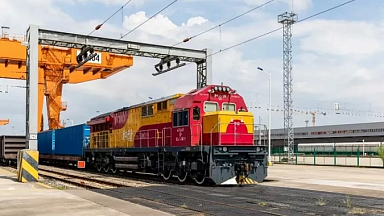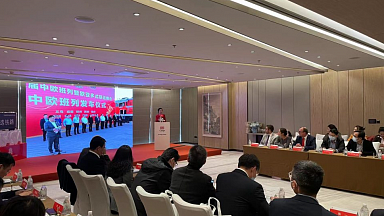Since its official launch in september 2013, China’s Belt and Road vision has had a global scope. Today, 80 per cent of the United Nations’ 193 member states are part of the project, including several European countries. When the One Belt One Road (OBOR) or new silk Roads — later renamed Belt and Road Initiative (BRI) — was announced, there was considerable enthusiasm in Europe for what was seen as an initiative that would foster sino-European connectivity and, more generally, closer EU-China ties. That was in stark contrast to the United states, where the BRI was perceived as a challenge to American primacy.
Europe was chosen as the endpoint of both the land-based and maritime routes. The Mediterranean sea, previously neglected by Chinese strategic thinkers, would emerge as an increasingly important area connecting the Indian Ocean and Europe via the Red sea. It came as no surprise then that the early implementation of the BRI in Europe focused on financing infrastructure projects, in particular railways in southeast Europe and ports in the Mediterranean. This was accompanied by a surge of Chinese green-field investments, complemented by monetary linkages between the People’s Bank of China and European central banks through the establishment of currency swap agreements and yuan or renminbi (RMB) bank clearing whose aim was to lower transaction costs of Chinese investments.
In March 2019, the Italian government led by Giuseppe Conte signed a Memorandum of Understanding (MOU) on the Belt and Road Initiative with China’s President Xi Jinping during the latter’s state visit to Rome, thus making Italy the only G7 nation and the only founding member of the EU to officially endorse Xi’s signature foreign policy project. Xi invested significant political capital in bringing Italy into the BRI and saw in the signing of the MOU a big win as it split the Western allies.
While Italy and other countries in southern and Eastern Europe were embracing the BRI, the core nations in Western and Northern Europe adopted a more critical attitude. Beginning in 2016-17, Germany and France had become increasingly wary of the BRI and of China’s predatory investments. This trend would reach Europe’s other countries some years later. In Italy, with the appointment as Prime Minister of Mario Draghi as Conte’s successor, in February 2021, BRI projects came to a halt, and eventually Italy left the BRI altogether under the conservative government that took power in 2022.
From the enthusiasm of the early years, the old continent has become wary of China’s connectivity project, which has been associated with Chinese predatory takeovers of European companies and with growing trade imbalances.
Yet, China’s BRI in Europe is not coming to an end, but it is rather being reconfigured. In Western Europe, the BRI is moving away from physical infrastructure projects and investment in industrial assets — the latter being increasingly protected from Chinese takeovers by both national and EU legislation — to financial and monetary connectivity, which is welcomed by various European actors, including some policy makers at the national level, eurozone institutions, and major banks. Concurrently, most of Eastern European countries continue to promote BRI projects and seek to attract Chinese investments, suggesting that there is a two-speed Europe when it comes to China, both in terms of geography and sectors.
Casarini, Nicola. 2024. «The Future of the Belt and Road in Europe.» IAI Istituto Affari Internazionali. February 25, 2024. https://www.iai.it/en/pubblicazioni/c03/future-belt-and-road-europe.


